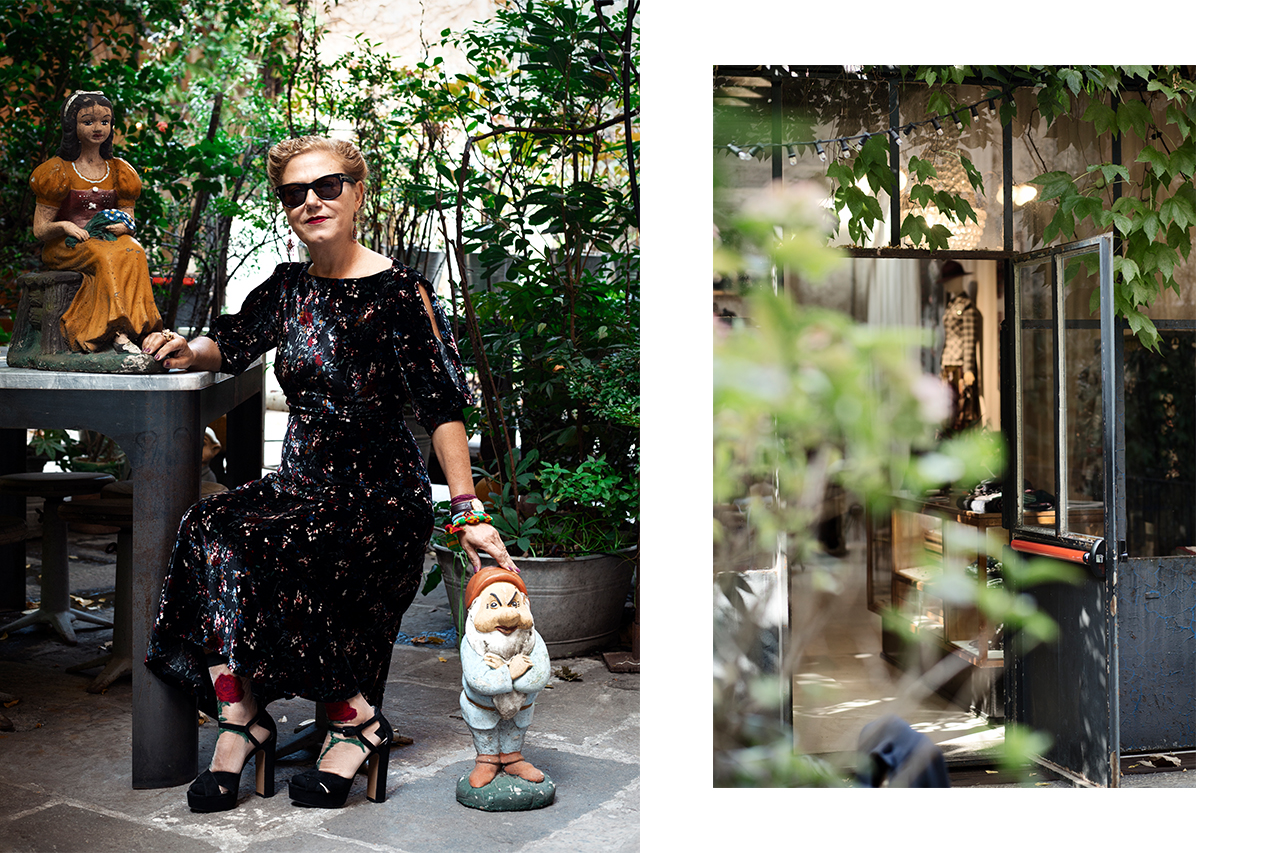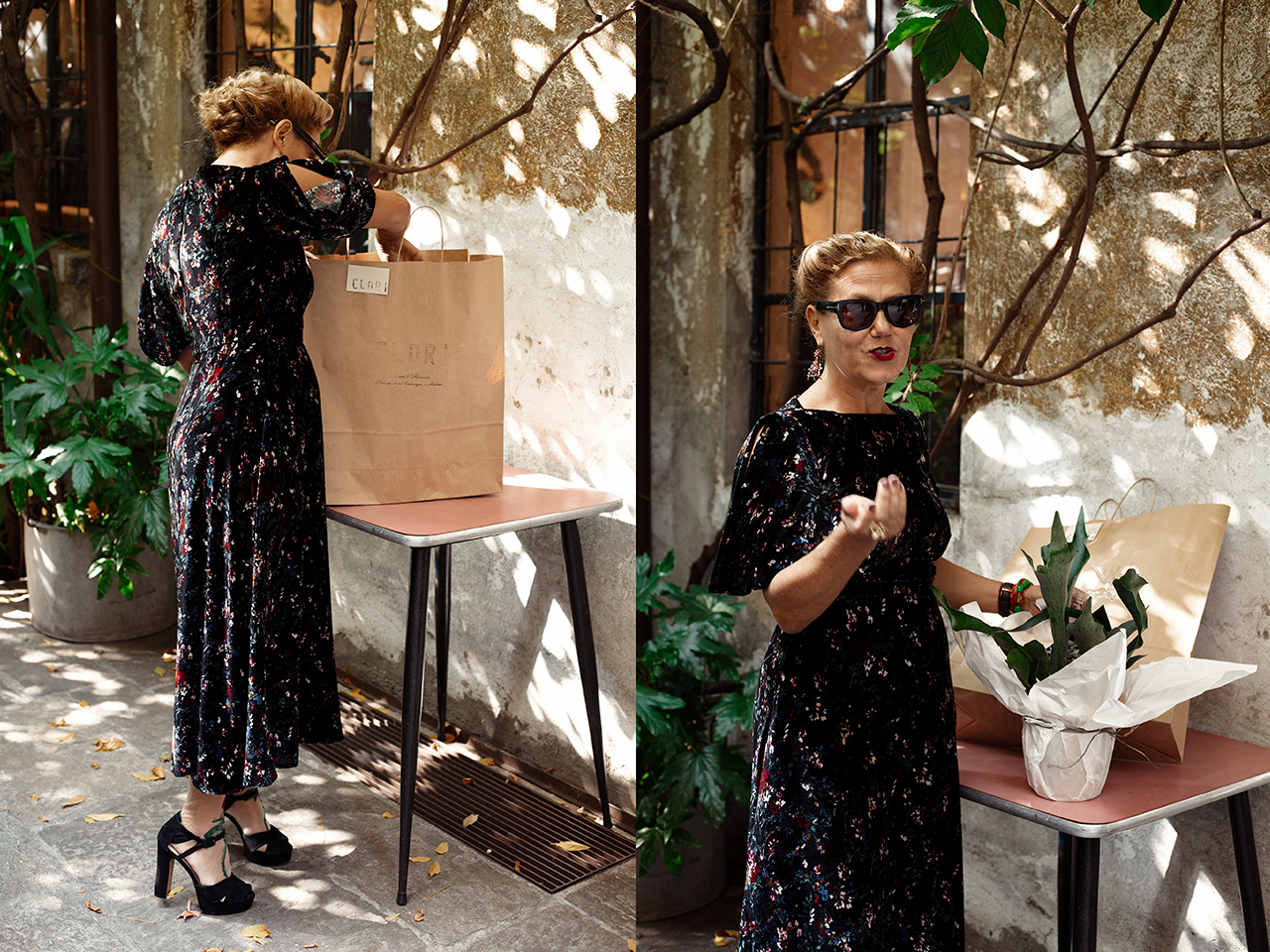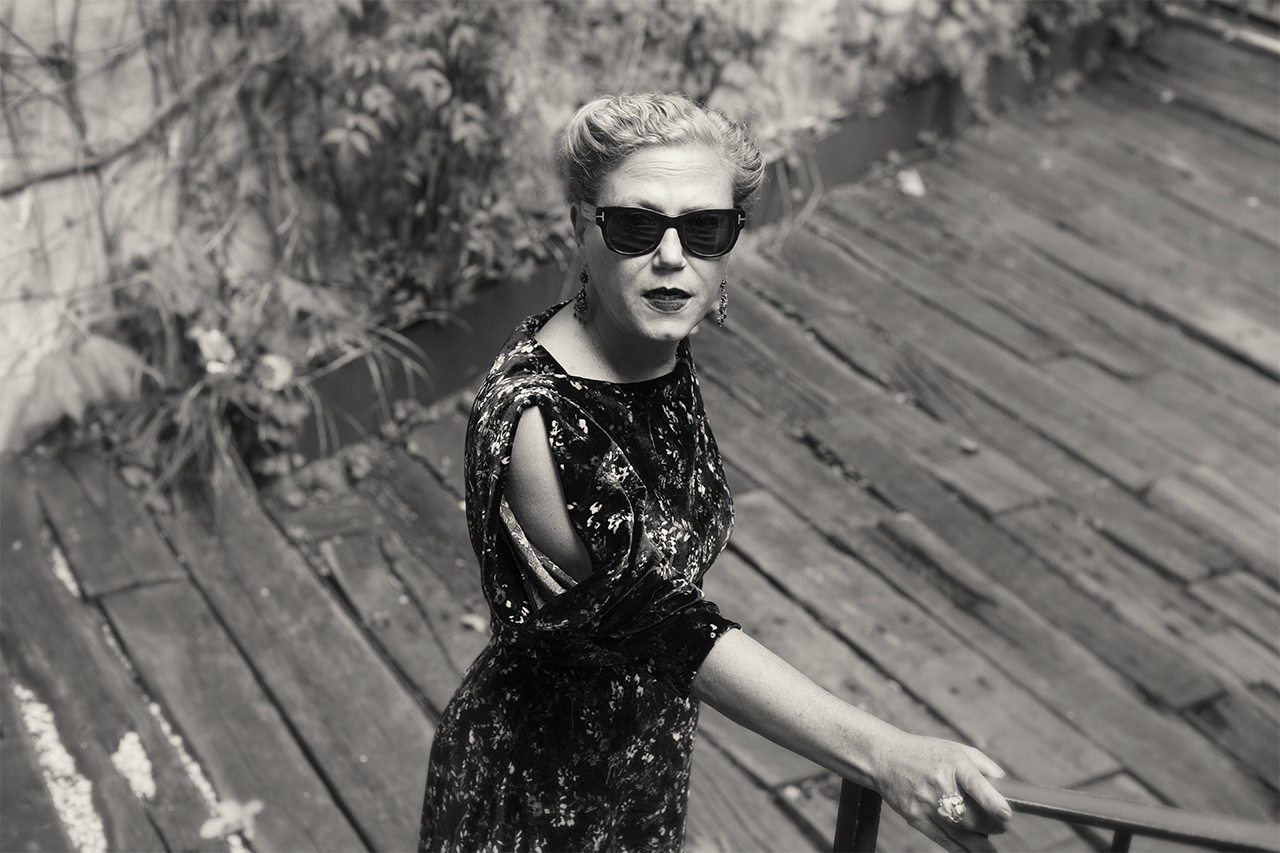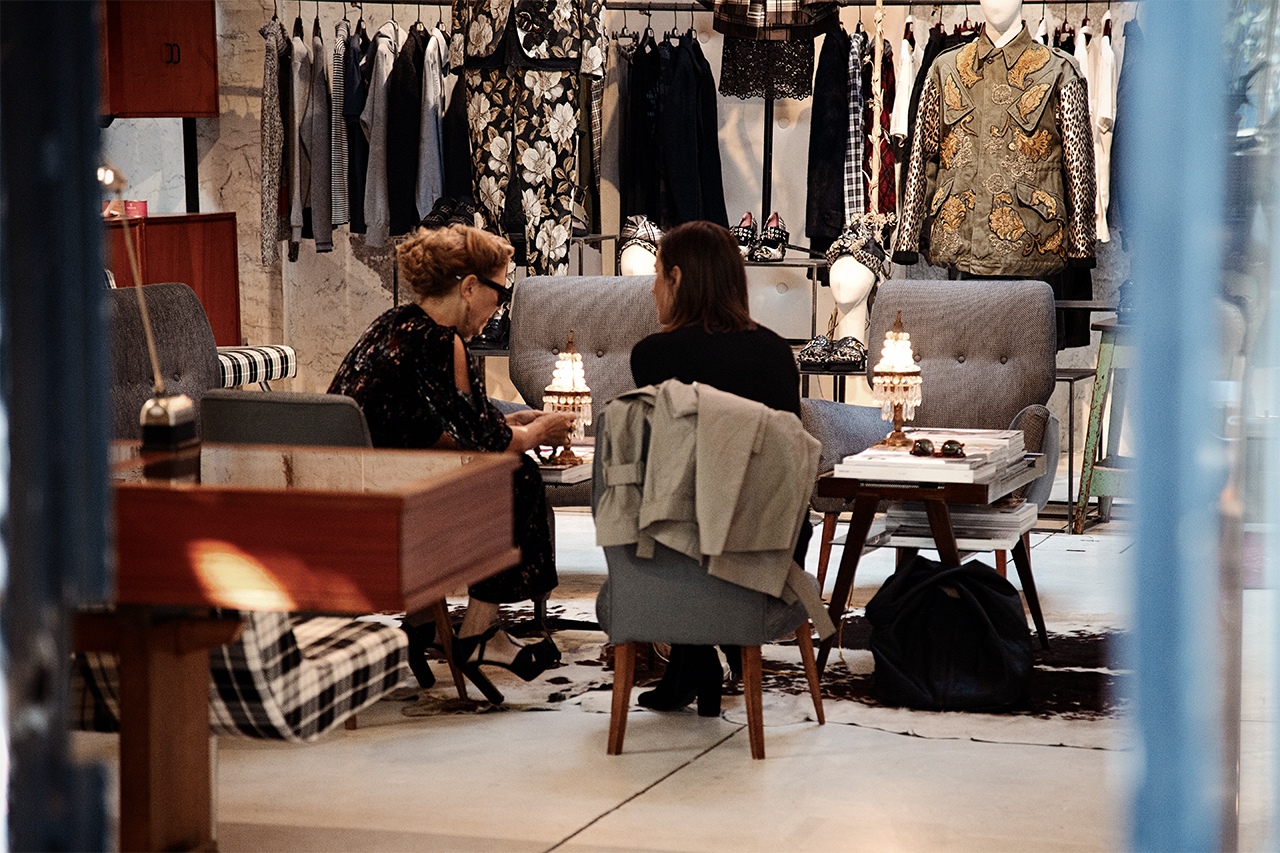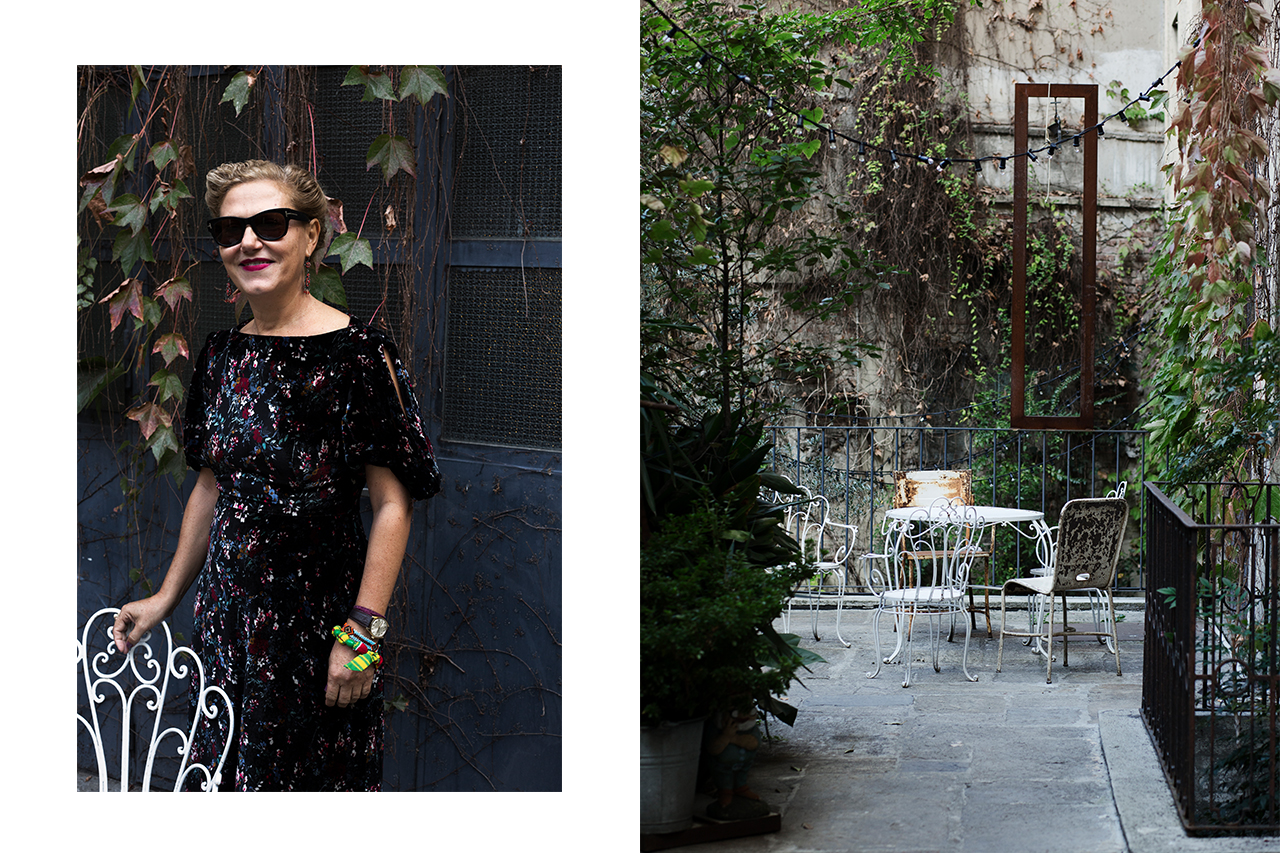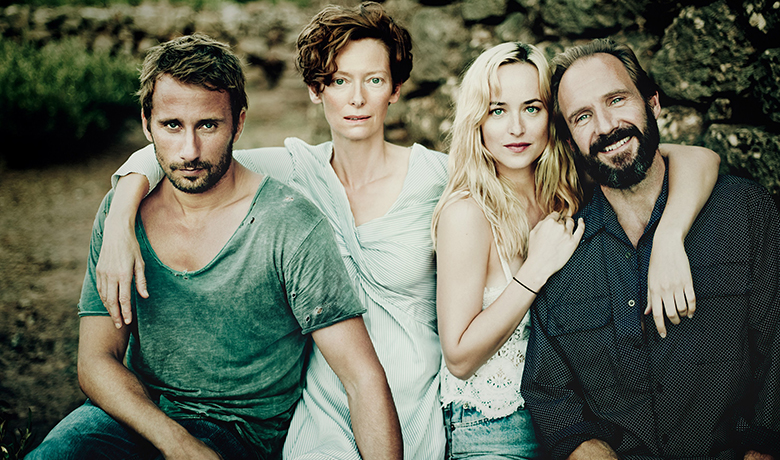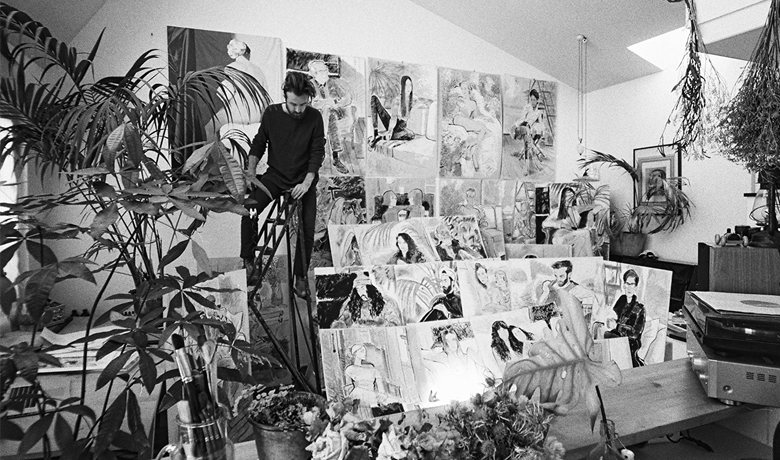#TheItaliaIssue
Let's Talk
THIS LAND DOESN’T LOOK LIKE ANY OTHER PLACE*
// The art of living art: an interview with Patrizia Marras.
WORDS BY MATILDE SCARAMELLINI
* a quote from David Herbert Lawrence, referring to Sardinia.
It’s an early September afternoon, Milan is punctually back on its usual rhythm.
Every time I walk into Nonostante Marras it kind of feels like stepping into a tiny metropolitan island, where senses suddenly come back to life, surrounded by a gust of springy fragrances and aromas coming from far away.
Here Patrizia welcomes me, effortlessly elegant as usual in a wonderful velvet dress, telling me joyfully about the hard work it took behind the choices which made Marras’ imaginary. In a moment where everything calls us away from our own roots, reduced to a soulless folklore object, Patrizia and Antonio interlaced a dream, perfectly curated in every detail, together with the Sardinian Identity Archaeology.
A vision that lies on a profound love for their own land, where the work carried on “nevertheless requires an international visibility” . Taking about fashion, creativity and art, three words that intensively coexist in this location wanted from Patrizia, (Nonostante Marras!), I begin to remember a small truth that is too often forgotten, something that nonetheless this woman carries on her with a natural class: there is a huge difference between making art and living art, the second one knows no season…
Matilde. You chose to live, work and raise your family in Sardinia; your decision to stay and trying to build something there has an inestimable value, although it means, as you sometimes say, a work which requires an international visibility coming from the borders of the Empire….
Patrizia. To us it was a way to defend and safeguard; being Sardinians, for how banalised it might be, actually helped us to have our own personal voice.
If it was for me I would have probably moved away from home at 18, it is fundamental to open yourself to the world but this doesn’t mean forgetting your own origins.
Today the choices I made help me to confirm a certainty I’ve always had: talking to the big public about your microcosm is the most modern thing you could possibly do. Which doesn’t mean falling into Folklore or exoticism.
Matilde. In Alghero you keep all the planning and the design, which is surely a quite unconventional choice – with the most positive meaning possible – did this preclude you of something?
Patrizia. It definitely closed the door on something and opened it somewhere else at the same time, only time will tell, but what we have is the privilege to be based in Italy, which qualification wise, honours us. I think that fashion has a great responsibility: the speed required in terms of production and release leads to a lack of respect for the work behind every single piece produced. And it is quite funny because this is not something which is part of my vision of fashion: if I think about the past and the beauty in that sartorial wait before you could wear a garment, there I really see the extremely big loss we are facing. From the other point of view I also accept this law of desire changing with time…
Matilde. To ennoble the work behind every piece and the storytelling at its creation, I think it’s one of the many intents which generated the exhibition “Nulla dies sine linea’’ exposed in the Triennale..
Patrizia. Yes, it certainly was. It was also a way to say that there’s nothing sacre and at the same time every form of creativity represents ‘holiness’ somehow. If you look back at the history of costume you can really feel if something was really meaningful.
Matilde. What’s your relationship with art? What is it that never stops to inspire you?
Patrizia. Art is part of my life and somehow its own glue and nourishment.
When I decided to share my life with Antonio, work became automatically part of my life in an absolute way and this means that ‘doing what I liked’ became part of my Everything.. I learned and desired to unite everything that means something to me. Nonostante Marras was born with this intent, art to me stands for a kind of “return” and it will never stop inspiring me. I can’t stand hearing people talking about modernity, or the fact that “everything has been already done or seen somewhere else’’.. what does it mean? Being modern is being aware of what has happened and then being able to mélanger. There’s nothing new to create, there are trends fading away even before they come to the world.
Matilde. And what about the word “fashion”?
Patrizia. Fashion to me is like chocolate. It makes everything sweeter and more fun.
I don’t understand people who design and don’t enjoy dressing up in their daily routines as if they don’t really care.
If you don’t believe in what you do, then why are you doing it?
Matilde. That is probably the reason why I picture a romantic woman when thinking about the Marras imaginary. A woman with an identity that doesn’t have to omologate to the “dictat” of the “contemporary woman” who often uses different tools which don’t belong to her to affirm herself in life?
Patrizia. I’ve alway chosen a casting with a certain personality, even back in 2000 when everything was about supermodels. A girl doing this kind of job has to be incredibly dressed as well; referring to what I was saying before about designers: a dress has to become part of you, it can’t be just something you wear.
This is part of femininity, it doesn’t matter what you like or not, to identify with what you portray on the outside is the best way to face everyday’s life more pleasantly.
After having listened to Patrizia’s words I can’t help but wonder about the importance of re-discovering a rituality in daily gestures, from working to pleasure; from the way to wear a dress to the way we set up the table and a beautiful quote by Frida Kahlo comes up to my mind: “where you can’t love, don’t linger”.
Patrizia Marras lensed by Claudia Difra, Milan, October 2017.
Interview by Matilde Scaramellini.
Translation by Amanda Ballerini.
ITA
E’ un primo pomeriggio di settembre, Milano, con puntualità, ha già ripreso il suo ritmo di marcia. Tutte le volte che varco la soglia di Nonostante Marras mi sembra di mettere piede in una piccola isola metropolitana, dove i sensi si risvegliano come investiti da una ventata di profumi primaverili e aromi di mondi lontani.
Qui Patrizia mi accoglie, come sempre elegantissima, in uno splendido vestito di velluto, e mi racconta con gioia del duro lavoro dietro le scelte che hanno costruito l’immaginario Marras. In un momento in cui tutto ci chiama ad allontanarci dalle nostre radici, sempre più ridotte ad oggetto di inanimato folklore, Patrizia e Antonio hanno tessuto un sogno, curato in ogni dettaglio, che ha a che fare con un’archeologia dell’identità sarda.
Una visione che poggia su di un amore per la propria terra, in cui viene portato avanti un lavoro che “richiede tuttavia una visibilità internazionale”.
Parlando di moda, creatività e arte, tre parole che trovano dimora in questo luogo fortemente voluto da Patrizia, (Nonostante Marras!), mi ricordo di una piccola verità troppo spesso messa da parte, ma che questa donna porta addosso con naturale classe: c’è una grossa differenza tra il fare arte e il vivere l’arte, la seconda non conosce stagioni.
Matilde. Avete scelto di vivere, lavorare e crescere famiglia in Sardegna; rimanere e provare a costruire qualcosa qui ha un valore inestimabile, ma significa, come tu stessa dici, fare un lavoro che richiede una visibilità internazionale dai confini dell’impero..
Patrizia. Per noi è stata una forma di difesa e una salvaguardia; il fatto di essere sardi, per quanto possa essere banalizzato, in realtà ci ha aiutato ad avere una voce.
Fosse stato per me probabilmente mi sarei trasferita a 18 anni, è sicuramente necessaria un’apertura al mondo, ma questo non significa dimenticare le tue origini.
Ad oggi le scelte fatte mi portano a riconfermare una convinzione: parlare ad un grande pubblico del tuo microcosmo è la cosa più moderna che si possa fare.
Il che non significa cadere nel Folk o nell’esotismo.
Matilde. Ad Alghero avete tutta la progettazione e la sartoria, questa è una scelta sicuramente anti-convenzionale, nell’accezione più positiva del termine, quanto vi ha precluso?
Patrizia. Sicuramente ci ha precluso tanto e allo stesso tempo dato forza, solo il tempo parlerà, ma quello che abbiamo il privilegio di avere qui in Italia, in termini di qualifica, va nobilitato.
Io credo che la moda abbia una grossa responsabilità: la velocità richiesta in termine di produzione ed uscita, porta ad una mancanza di rispetto per il lavoro che c’è dietro ad ogni singolo capo. E questo non fa parte del mio modo di guardare alla moda: se penso al passato e alla bellezza di quell’attesa sartoriale prima di poter indossare un capo, ecco qui vedo una grossa perdita.
D’altra parte capisco e accetto la legge del desiderio.
Matilde. Nobilitare il lavoro dietro ad ogni capo, raccontare la storia che c’è dietro, credo sia stato uno dei tanti intenti con cui è nata la mostra “Nulla dies sine linea” in Triennale..
Patrizia. Si sicuramente, ma da una parte anche dire che non c’è nulla di sacro e allo stesso tempo ogni forma della creatività lo è. Guardando alla storia del costume se una cosa è vera lo senti.
Matilde. Qual è il tuo rapporto con l’arte? Cosa non smetterà mai di ispirarti?
Patrizia. L’Arte fa parte della mia vita e in qualche modo ne è nutrimento e collante.
Quando ho scelto di condividere la vita con Antonio, il lavoro si è intrecciato con la vita in modo assoluto e questo significa che il “fare ciò che mi piace” è diventato parte del tutto.
Ho imparato e voluto convogliare ciò che per me è importante. Nonostante Marras è nato proprio da questa esigenza, l’arte per me è una restituzione e non smetterà mai d’ispirarmi.
Non sopporto sentir parlare di modernità, che “tutto è già stato fatto o visto” cosa significa in fondo? Essere moderni vuol dire essere consapevoli di quello che è stato e quello che è e saperlo mélanger. Non c’è niente da inventare, ci sono tendenze che passano ancora prima di arrivare.
Matilde. E la parola moda?
Patrizia. La moda per me come la cioccolata. E’ qualcosa che addolcisce, che mi diverte. Non capisco chi disegna e poi esce vestito svogliatamente, come se fosse superiore a tutto questo, come se non gli importasse. Se non credi in ciò che fai, perché lo fai?
Matilde. Ecco perché la donna che mi viene in mente pensando al vostro immaginario ha una femminilità romantica, alla quale non è richiesto di omologarsi ai dictat della “donna contemporanea” che spesso sembra cercare di usare dei mezzi non suoi per affermarsi?
Patrizia. Io ho sempre scelto un casting che avesse personalità, anche nel 2000 quando si parlava solo di supermodel. Anche una ragazza che fa questo lavoro deve essere credibile vestita, ritorniamo allo stesso discorso: un abito deve appartenerti, non può essere solo qualcosa che ti metti addosso. Questo fa parte della femminilità, a prescindere da cosa ti piaccia o meno, riconoscersi e identificarsi in ciò che mostri all’esterno, credo sia un modo per affrontare la vita di tutti i giorni in modo più piacevole.
Sentendo le parole di Patrizia, penso all’importanza di riscoprire una ritualità nei gesti più quotidiani, dal lavoro, al piacere; dal vestire al modo di apparecchiare una tavola, e mi viene in mente una bellissima frase di Frida Kahlo: “dove non puoi amare, non soffermarti”.
Patrizia Marras fotografata da Claudia Difra, Milano, Ottobre 2017.
Intervista a cura di Matilde Scaramellini.
Traduzione Amanda Ballerini.
